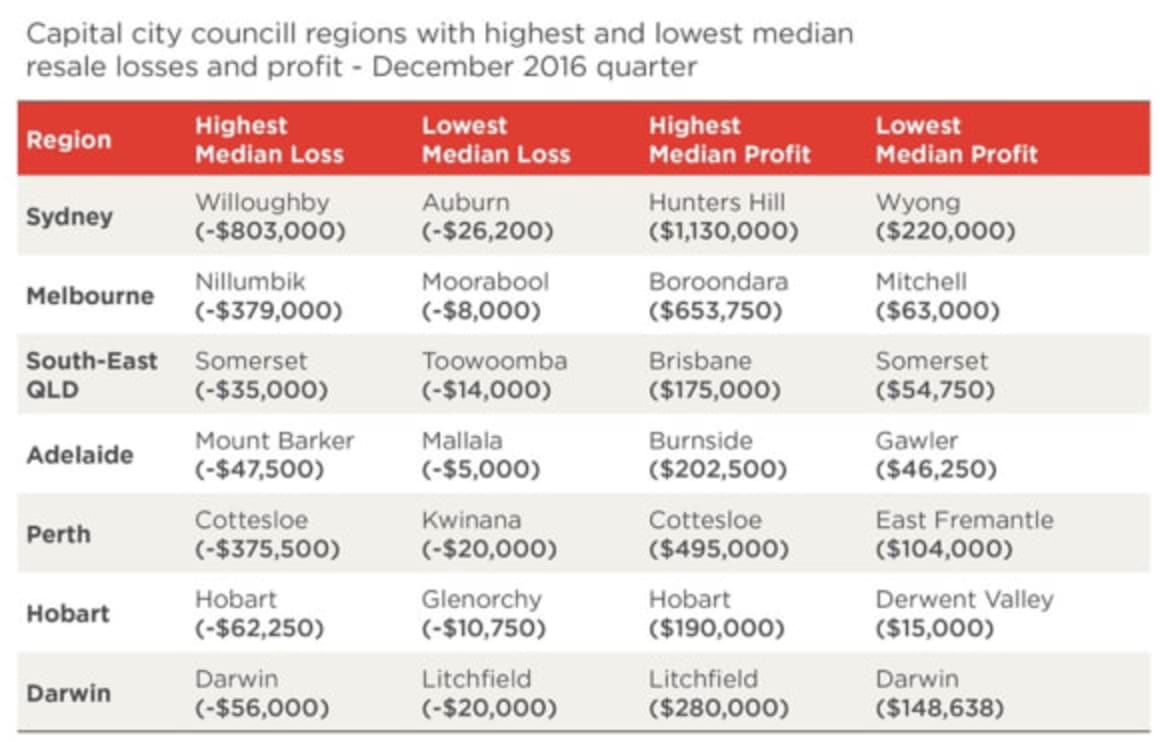SEQ property sale loss felt especially at Somerset

Nationally, this equates to 8.9% of the dwellings that resold over the final quarter of 2016 transacted for less than their previous purchase price, and moderately lower than the 9.3% over the September 2016 quarter. However, when compared with the December 2015 quarter, the proportion of loss-making sales has increased from 8.2% of all resales at a loss.
Report author Cameron Kusher said Capital city housing markets continued to record a lower proportion of loss-making resales than regional areas of the country.
“Regional area trends are showing that homes reselling at a loss are lower in coastal and lifestyle markets, while in the markets linked to the resources sector, losses remain very high although they have eased a little over the quarter.”
An area breakdown (see below) identifying the profits and losses performance differences over the December 2016 quarter delivers some interesting observations.
As an example, in Sydney’s inner north, the council area of Willoughby recorded the highest median loss over quarter at $803,000, while close neighbour Hunters Hill recorded the highest profit in the city at $113,000. In Melbourne, Nillumbik experienced the highest median loss at $379,000 while the Booroondara profited by $653,750.
The below table provides a snapshot (more in attached report) of the areas to experience the greatest median losses, lowest median losses, greatest median profits & lowest median profits.

The CoreLogic Pain & Gain data shows that across the country, 7.6% of houses and 12.3% of units that resold over the December 2016 quarter transacted for less than their previous purchase price. In the capital cities, the proportion of houses resold at a loss over the quarter (5.4%) were almost half that of units (10.0%) while across the regional markets, the proportion of house resales at a loss (7.6%) was much lower than the 17.8% of units resold at a loss.
Mr Kusher said Sydney was the only region where the proportion of units resold at a loss over the quarter was actually lower than houses.
"On the other hand, in Melbourne, Brisbane and the ACT the proportion of units resold at a loss over the quarter was more than five times greater than houses resold at a loss.”
“A retrospective look at the data indicates that it has been extremely rare for resales of houses to record a higher proportion of loss than units. This is reflective of the fact that house values have typically increased at a more rapid pace than units.”
“In a market like Sydney, where more units have been built than houses over the past two decades, and the gap between house and unit prices is substantial, the trends have changed recently with units proving less likely to resell at a loss than houses.
“This is likely linked to the fact that there is a wide gap between house and unit prices in the city and for many units are now the only option for home purchase,” Mr Kusher said.
